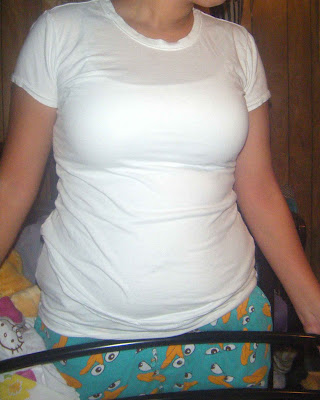http://www.outdoorphotographer.com/how-to/shooting/the-digital-zone-system.html?start=1
enjoy
Steve
Wednesday, October 26, 2011
The Zone System for Today
http://photo.tutsplus.com/articles/theory/understanding-using-ansel-adams-zone-system/
See the above url for the sight
that does a great job discussing the use of the Zone system today
Steve
See the above url for the sight
that does a great job discussing the use of the Zone system today
Steve
The Zone system Basics
http://sergykal.me/post/1016280405/demystifying-ansel-adams-zone-system
Above is the URL where the following was clipped
Thanks to Sergi for his great explanation of the Zone system
Steve
Imagine a ladder. The bottom rung of the ladder represents pure black (Zone 0). The top rung of the ladder represents pure white (Zone 9). The mid-point of the ladder (Zone 5) represents 18% gray or the accepted average reflectance of light from a given subject, which is interpreted by your camera’s integrated light meter as the correct exposure for both B&W and color images. From the mid-point, Zone 5, each sequential step or zone represents a change of one f-stop. Zone 4 requires an exposure of one f-stop less than your meter reading (or Zone 5). Conversely, Zone 6 requires an exposure of one f-stop more than your meter reading. Therefore, the entire Zone System encompasses a nine-stop differential, which is more than adequate to address even the most daunting high contrast scene in nature.
Now, let’s add values to these Zones. These are values Ansel Adams himself associated with the nine Zones.
Zone 9 – known as key white or pure white – pure white paper or snow in bright sunlight.
Zone 8 – gray/white, near white – distinct highlight detail, like a white wall in sunlight or brilliant surfaces in flat light.
Zone 7 – light gray – pale “white” skin, a concrete walkway in sunlight.
Zone 6 – mid-tone gray – average “white” skin or shaded areas in snow on a bright, sunlit day.
Zone 5 – medium gray or 18% gray – darker “white” skin or lighter “black skin,” light foliage or the dark blue of a clear blue sky.
Zone 4 – medium dark gray – slightly darker “black” skin, dark foliage or shadows in landscapes.
Zone 3 – very dark gray – distinct shadow texture is visible.
Zone 2 – dark gray/black – only subtle textures are visible.
Zone 1 – near black – shadows in faint light or rooms without light.
Zone 0 – key black or pure black – carbon or photo paper black.
Remember your camera is calibrated to read 18% gray as “correct” and assumes that is the desired amount of light reflectance. Thus, it will average the light readings of extreme shadows or highlights resulting in over-exposed or under-exposed images, respectively. The Zone System eliminates this problem by assigning these familiar “values” to each zone. The key to success with the Zone System is to carefully pre-visualize your subject and apply the correct Zone values to the important exposure areas. Then, you must adjust your exposure settings accordingly to accurately produce the results you want.
Let’s say you are on vacation and want to take a photo of snow-covered Pikes Peak. It’s a typical sunny day in Colorado. You take a meter reading of the snow, which suggests a shutter speed of 1/500 and a corresponding aperture of f/16. If you snap the photo using these settings, the resulting image will be dull 18% gray. According to the Zone System, snow in bright sunlight falls under Zone 9, which is four stops above Zone 5, or 18% gray. Therefore, you must first open up four stops to f/4 and shoot at 1/500. Now, your photo will clearly show the brilliance of the white snow under the Colorado sun.
Above is the URL where the following was clipped
Thanks to Sergi for his great explanation of the Zone system
Steve
Imagine a ladder. The bottom rung of the ladder represents pure black (Zone 0). The top rung of the ladder represents pure white (Zone 9). The mid-point of the ladder (Zone 5) represents 18% gray or the accepted average reflectance of light from a given subject, which is interpreted by your camera’s integrated light meter as the correct exposure for both B&W and color images. From the mid-point, Zone 5, each sequential step or zone represents a change of one f-stop. Zone 4 requires an exposure of one f-stop less than your meter reading (or Zone 5). Conversely, Zone 6 requires an exposure of one f-stop more than your meter reading. Therefore, the entire Zone System encompasses a nine-stop differential, which is more than adequate to address even the most daunting high contrast scene in nature.
Now, let’s add values to these Zones. These are values Ansel Adams himself associated with the nine Zones.
Zone 9 – known as key white or pure white – pure white paper or snow in bright sunlight.
Zone 8 – gray/white, near white – distinct highlight detail, like a white wall in sunlight or brilliant surfaces in flat light.
Zone 7 – light gray – pale “white” skin, a concrete walkway in sunlight.
Zone 6 – mid-tone gray – average “white” skin or shaded areas in snow on a bright, sunlit day.
Zone 5 – medium gray or 18% gray – darker “white” skin or lighter “black skin,” light foliage or the dark blue of a clear blue sky.
Zone 4 – medium dark gray – slightly darker “black” skin, dark foliage or shadows in landscapes.
Zone 3 – very dark gray – distinct shadow texture is visible.
Zone 2 – dark gray/black – only subtle textures are visible.
Zone 1 – near black – shadows in faint light or rooms without light.
Zone 0 – key black or pure black – carbon or photo paper black.
Remember your camera is calibrated to read 18% gray as “correct” and assumes that is the desired amount of light reflectance. Thus, it will average the light readings of extreme shadows or highlights resulting in over-exposed or under-exposed images, respectively. The Zone System eliminates this problem by assigning these familiar “values” to each zone. The key to success with the Zone System is to carefully pre-visualize your subject and apply the correct Zone values to the important exposure areas. Then, you must adjust your exposure settings accordingly to accurately produce the results you want.
Let’s say you are on vacation and want to take a photo of snow-covered Pikes Peak. It’s a typical sunny day in Colorado. You take a meter reading of the snow, which suggests a shutter speed of 1/500 and a corresponding aperture of f/16. If you snap the photo using these settings, the resulting image will be dull 18% gray. According to the Zone System, snow in bright sunlight falls under Zone 9, which is four stops above Zone 5, or 18% gray. Therefore, you must first open up four stops to f/4 and shoot at 1/500. Now, your photo will clearly show the brilliance of the white snow under the Colorado sun.
Thursday, October 13, 2011
Two new non credit courses starting at BPCC soon
Getting more out of your DSLR, by Steven Lott
Oct 18 - Nov 22
Tuesday's from 8:30 AM - 11:30 AM <Update> This class is cancelled it may be rescheduled for an evening class IF there is enough demand, call BPCC if your interested.
Adobe PhotoShop LightRoom by Steven Lott
Contact Bossier Parish Community College Work Force center for more Info
Oct 18 - Nov 22
Tuesday's from 8:30 AM - 11:30 AM <Update> This class is cancelled it may be rescheduled for an evening class IF there is enough demand, call BPCC if your interested.
Adobe PhotoShop LightRoom by Steven Lott
Contact Bossier Parish Community College Work Force center for more Info
Wednesday, October 5, 2011
Many students of Photography under expose their images


Don't critique this students image on cropping as I have re cropped so you can not determine who the subject is
The First image is one that I used levels in PS to adjust the exposure of both the highlights and the mid tones
I am pretty sure we can all see a big difference
the original image the exposure was based on the light reflected back from the T shirt
causing the camera to under expose
Remember reflected light metering only works accurately when we are taking pictures of kodak grey cards !!!
Subscribe to:
Posts (Atom)
